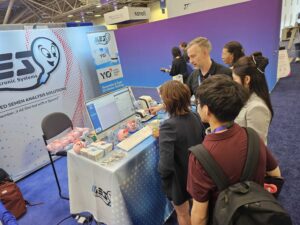Question: Are there any officially published recommendations from CAP or CLIA regarding acceptable “comparison limits” to backup methods?
Answer: Analytical Quality Requirements based on CLIA regulations can be found in the links below:
https://www.westgard.com/clia.htm
Total Allowable Error Limits Table
It is seen from these documents that allowable error limits vary based on the parameter tested. Also of note is that the requirements don’t include validation of a new method (comparison) or include semen analysis. Nevertheless the concept of Total Allowable Error limits can be used for a new method validation in semen analysis. In the document below, 3 standard deviations (3SD) or 25% error limits are quite frequent in the endocrinology and immunology analytes.
If 200 spermatozoa counted twice as required by the WHO 5th ed. manual, Sperm Concentration 3SD allowable error limit will be: 3SD = 3 X √400 = 60 that is: 60/400 X 100% = 15%.
The 3SD error formula for parameters expressed in percentages is different: 3 X √p(100-p)/N, where P = percentage, N = number of cells counted.
For example, 3SD allowable error limit for 40% Motility (WHO 5th cutoff) is:
3 X √40(100-40)/400 = 18% and results in 22% – 58% variability.
For 4% Morphology (WHO 5th cutoff), the 3SD allowable error limit is:
3 X √4(100-4)/400 = 3% and results in 1% – 7% variability.
The errors specified by the WHO 5th manual are purely statistical and do not cover the multiple issues impacting semen analysis results (sample mixing, dilution errors, non-equal aliquots, subjectivity, etc.). Therefore it will be safe to conclude that 3SD or 25% error limits (whatever is greater) similar to CLIA requirements for endocrinology and immunology analytes can be applied to semen analysis “comparison limits”.



